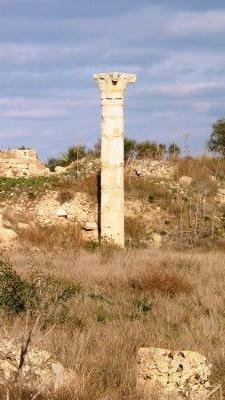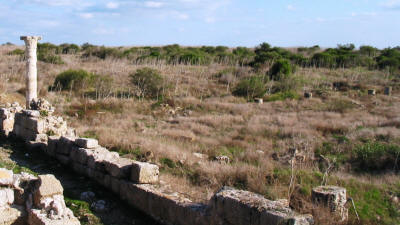The Agora
Salamis, Near Famagusta, North cyprus
 |
| The Remaining Column |
This stone forum is situated alongside the Byzantine cistern, and was meeting place and market of Salamis.
The agora dates back to Hellenistic times, but it is thought to have been restored about 22BC during the time of Augustus.
It was a large, rectangular space. In fact, measuring 750ft by 180ft, it is one of the largest known. On the two long sides there were stoas, lined with columned arcades, which offered protection from heat in the summer and rain in the winter. Shops were located in the stoa, and more expensive items could be bought here. Only one of these columns has survived to the present day.
Let your imagination take you back 2000 years. project the stumps of the columns upwards and picture this place in its heyday. To one end, standing proudly, is the temple of Zeus. The large central courtyard has temples dedicated to gods relating to commerce, and was decorated with statues and fountains.
 |
| Salamis Agora |
The agora was open to everyone, both citizens and slaves, unlike the gymnasium and baths, which were restricted to citizens only. Men and slaves usually did the shopping, with slaves and donkeys carrying the purchases. Wealthier women may have visited to buy perfume, jewellery and expensive cloth.
In the large empty space of the agora, stallholders set up their sun shaded tables where you could buy products from near and afar. Locally produced goods included fruit, grain, olives, wine, fish, and vegetables. The nearby port of salamis meant that more exotic goods were also available.
Craftsmen would have had stalls in, or near, the agora. Here you could buy new shoes, have your hair cut or change your money.
In the shady part of the agora, family and friends could meet for a chat, while business people could make deals. Citizens could join in or listen to discussions about community and political issues. Spectators could watch criminals being placed on trial in the agora.
More than just a marketplace, the agora was a busy, bustling area vital to the community.
See the location in Google maps.
Return to Salamis Index, or Famagusta Index.